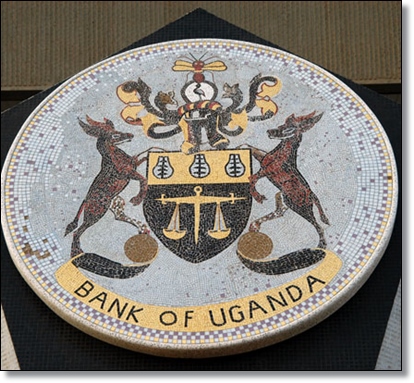Uganda: Banking Sector Solid But Vulnerable

 |
The report also elaborates that stringent supervision by BOU led to the closure of Global Trust Bank Limited (GTBL) in July 2014, in line with the Financial Institutions Act of 2004. While the financial sector comprises of the commercial banks, credit institutions, and micro-finance deposit-taking institutions, the National Social Security Fund (NSSF), a postal bank, insurance companies, development banks, foreign exchange bureaus and the Uganda Securities Exchange, BoU only partly supervises non-banking financial institutions.
On the overall, financial outreach increased with ATMs, commercial bank branches and mobile money transactions registering sizeable growth. The number of ATMs and bank branches respectively increased to 830 and 564 in December 2014 compared to 768 and 542 in December 2013 with notable expansion outside Kampala and the metro regions of Uganda. Mobile money transactions increased to Ushs. 496.3 million with an associated value of Ushs. 24.05 trillion in December 2014, compared to 399.5 million transactions and the value of Ushs. 18.6 trillion in December 2013. The number of registered customers stood at Ushs. 18.8 million in December 2014, accounting for more than 50% of Uganda’s population. Financial access however, remains low with only 20% of adults having access to formal bank accounts.
The assessment of financial stability reveals that financial sector remains sound, well capitalized, liquid and profitable. In particular, banking sector which represents over 95% of the financial sector assets recorded an overall improvement in performance in the year ending 2014, mainly on account of the increase in loans and advances to Ushs 9.4 trillion. Deposits remained strong at 81% of the banks’ total liabilities. The stress tests carried out quarterly, with the last conducted end of December 2014, reveal that the banking sector remains resilient to adverse shocks emanating from non-performing loans, deposit withdrawals, decrease in the interest income from government securities, and the large depreciation of the Uganda shilling.
The overall performance of the financial sector notwithstanding, traces of vulnerability remain. First, the size of the financial sector remains small and dominated by the commercial banking sector. The banking sector is dominated by a few players; the top three banks account for over 50% of the banking sector assets and the top two banks (Stanbic and Standard chartered bank) approximately account for 50% of the total banking profitability in 2014. The limited competition among the 25 commercial banks, in part, explains the obstinate prevalence of high interest rates and high spreads (lending rates minus deposit rates) despite the deposits being the largest share of bank funds at a low cost annually of 3.6%. The increasing investments in government securities by banks is likely to increase interest rates. Deposit base and private sector credit remain low by regional standards, at about 17% and 14% of GDP respectively, which is an indication of low levels of savings and financial development.
The banks stress tests also revealed that the sector remains vulnerable to a couple of risks; in particular, credit risk emanating from large borrowers holding a large proportion of their portfolio in the top 5 banks (also referred to as systematic banks). Their loan default would have significant consequences on commercial banking sector capital exacerbating non-compliance with statutory requirements. In addition, despite the non-performing loans reducing in 2014, they remained sizeable at Ushs.390 billion or 4.1% of the total gross loans. The majority reside in trade and commerce, and building and construction sectors.
The economy became increasingly dollarized in 2014, with the foreign denominated components of the banks’ balance sheet growing faster than their shilling counterpart, illustrating risk aversion on the part of shilling depositors. The foreign currency deposits to total deposits increased by 4 basis points to 42.1%, while the foreign currency loans to total loans were at nearly 44% in December 2014. This is partially explained by the growing nonresident funds driven largely by the presence of regional subsidiary banks. This does not only increase foreign currency risks to the sector, but also, in part, explains the depreciation trend of the Uganda shilling.
The upward swings in interest rates noted during the first half of 2015 coupled with the economy outlook risks including election related shocks, the banking sector should face a jagged run, in particular the bottom 10 banks whose cost to income ratio is nearly 100%. Prudent supervision alone is panacea so there is need for a concerted to address the broader structural and regulatory weakness in the banking sector.
By Enock Nyorekwa Twinoburyo
Economist and PhD Research Fellow, University of South Africa.
etwinon@gmail.com
